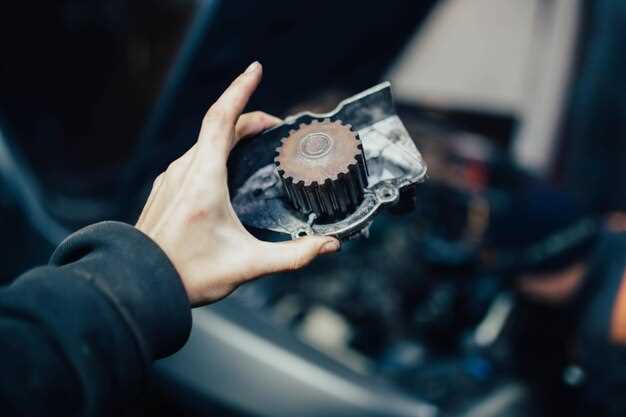
Transmission slipping is a common issue faced by BMW owners, often indicating underlying problems that require prompt diagnostics. Understanding the symptoms and addressing them early can prevent further damage and costly repairs. The transmission is a crucial component of any vehicle, and its proper functioning is essential for the overall performance of your BMW.
When diagnosing transmission slipping, it’s important to recognize the signs that might indicate an issue. Drivers may experience a noticeable delay in acceleration, unexpected changes in engine RPM, or even a complete loss of power during gear shifts. These symptoms occur as the transmission struggles to maintain a firm grip on the gears, leading to a disconcerting driving experience.
Proper diagnostics involve more than just observing these symptoms; it requires a thorough inspection of both the mechanical and electronic components of the transmission system. Technicians will often use specialized diagnostic tools to assess fluid levels, check for error codes, and evaluate the condition of various components. Addressing slipping issues promptly will not only enhance the driving experience but also extend the lifespan of your BMW’s transmission.
Identifying Symptoms of Transmission Slipping in BMW Vehicles

Transmission slipping in BMW vehicles can lead to significant performance issues if not addressed promptly. Recognizing the symptoms early is crucial for effective diagnostics and prevention of further damage. One of the primary signs of transmission slipping is an unexpected increase in engine RPMs without corresponding acceleration. This often indicates that the transmission is not properly engaging, leading to a feeling of reduced power.
Another common symptom is delayed shifting, where the vehicle hesitates to change gears when accelerating. This delay can be accompanied by a sudden, harsh engagement into gear, which signifies potential slipping issues. Additionally, the presence of unusual noises, such as grinding or whining, during gear shifts can indicate that the transmission is struggling to maintain proper engagement.
Another important symptom to monitor is fluid leakage. If you notice reddish-brown fluid pooling beneath your BMW, it might suggest a problem with the transmission system. Low transmission fluid levels can exacerbate slipping conditions, limiting the transmission’s ability to operate smoothly. Warning lights on the dashboard related to the transmission system should also not be ignored, as they may indicate diagnostic trouble codes linked to slipping.
Lastly, if you experience a sudden loss of power while driving, it may be a clear indicator of transmission slipping. Regular diagnostics and monitoring of your BMW’s performance can help identify these symptoms early, allowing for timely maintenance and repairs to ensure optimal driving conditions.
Using Diagnostic Tools to Assess BMW Transmission Performance

Diagnosing slipping transmission issues in BMW vehicles requires a thorough understanding of the transmission system and appropriate use of diagnostic tools. These tools help identify underlying problems and ensure the transmission operates efficiently.
Here are some essential diagnostic tools for assessing BMW transmission performance:
- OBD-II Scanner: This tool reads trouble codes from the vehicle’s engine control unit (ECU). It can help identify issues related to transmission performance, including slipping. Look for codes related to transmission sensors or solenoids.
- Multi-Function Tester: A multi-function tester can measure voltage, current, and resistance. This is useful for evaluating electrical components related to the transmission. Faulty sensors may indicate a slipping problem.
- Transmission Fluid Analyzer: Checking the quality and condition of transmission fluid is crucial. An analyzer can test for contamination or degraded fluid, both of which can lead to slipping issues.
- Live Data Monitoring: This allows technicians to observe real-time data from the transmission system, including gear ratios, engine RPM, and fluid temperature. Continuous monitoring can reveal patterns that suggest slipping.
- Pressure Test Kit: Transmission pressure tests can uncover internal leaks or mechanical failures. Consistent low pressure may cause slipping and necessitate further examination.
Utilizing these tools in conjunction with experience and knowledge of BMW transmission systems can significantly improve diagnosis accuracy. Proper assessments ensure timely repairs, ultimately enhancing vehicle performance and reliability.
Common Causes of Transmission Slipping and Their Solutions
Transmission slipping in BMW vehicles often stems from various underlying issues that can affect performance. Understanding these causes is crucial for effective diagnostics and timely solutions.
One of the primary reasons for transmission slipping is low transmission fluid levels. Insufficient fluid can lead to inadequate hydraulic pressure, causing the gears to disengage. Checking and topping up transmission fluid can often resolve the problem, but it is essential to investigate for leaks that may have caused the fluid loss.
Another common cause is contaminated transmission fluid. Dirt, debris, and metal particles can clog the transmission filter, restricting fluid flow and leading to slipping. Regular maintenance, including fluid changes and filter replacement, helps to prevent this issue and prolong the transmission’s lifespan.
Worn clutch plates are also a major contributor to transmission slipping. Over time, these components can wear down due to regular use, impacting the ability to engage gears properly. Replacing the worn clutches is the most effective solution for restoring transmission functionality.
Additionally, issues with the transmission control module (TCM) may result in slipping. If the TCM is malfunctioning, it may not send the correct signals to the transmission, leading to gear slippage. Diagnosing the TCM with specialized tools and reprogramming or replacing it can rectify this issue.
A malfunctioning torque converter can create slipping problems as well. If there are issues with the lock-up feature or the converter itself, it may fail to provide the necessary torque to the transmission. In such cases, a thorough diagnostic process is required to assess and potentially replace the torque converter.
Lastly, a faulty or worn-out throttle position sensor can affect engine performance, leading to transmission slippage. This sensor relays information about the throttle’s position to the transmission, and if it fails, the transmission may not shift correctly. Evaluating and replacing a defective sensor will often resolve the slipping issue.



